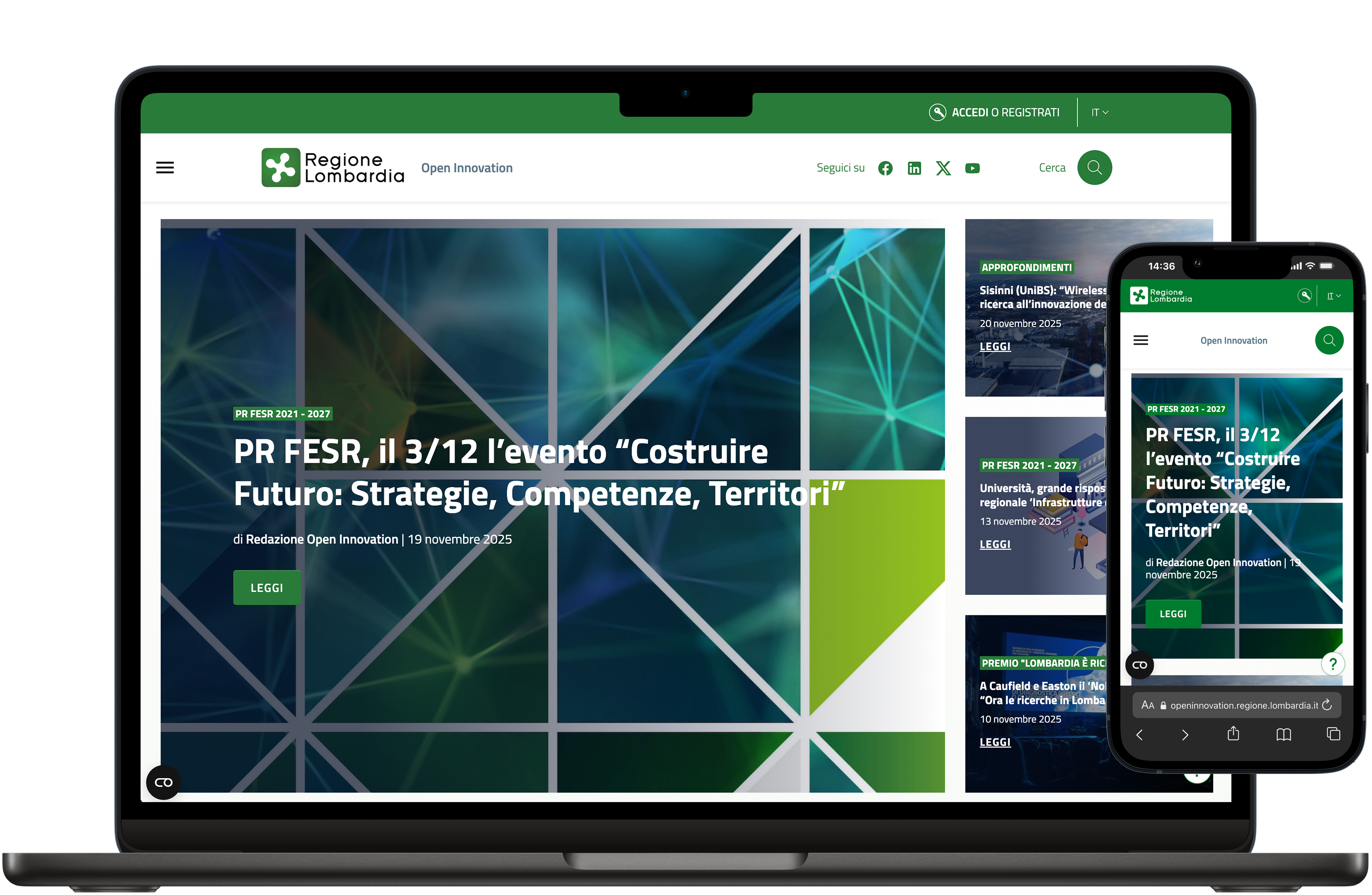Case study
Open 2.0: an open-source collaborative platform to support public administration services

Technology
Standardization of service models and simplification of internal processes in the public administration
Greater accessibility and quality of digital services for citizens and businesses
Executive summary
Open 2.0 is an open source framework composed of strategic digital communication services and application modules, available for reuse by Public Administrations. The software modules, published in AGID's Catalogue of Software for Reuse, are developed and maintained by Digital360 GOV in collaboration with ARIA S.p.A. on behalf of Regione Lombardia.
Open 2.0 offers a catalog of functional modules and support services with which PAs can implement initiatives to:
- promotion and enhancement of public policies and government action;
- digital communication and multichannel relationship management (CRM), with integration to online services;
- collaboration and participation between PAs, citizens, stakeholders and professional communities;
- event management in physical, digital or immersive modes.
Our approach
Our approach to the development and delivery of Open 2.0 services is based on a modular, interoperable and scalable logic, allowing administrations to integrate the platform into their digital ecosystems without disruption to existing services.
The framework is designed to accommodate technological evolution, including the ability to introduce new features such as artificial intelligence components, advanced data analytics and immersive environments to support collaboration and training.
The platform also enables personalized user interactions, management of open or restricted collaborative spaces, advanced community management tools, configurable validation and approval workflows, and participatory management models that foster transparency and engagement.
The results
- 140k registered users (citizens and organizations, 2024 data from installations at Regione Lombardia)
- More than 30 adoptions of the framework in CAP and PAL contexts
- 50% campaign open rate (CRM) (2024 data related to installations at Regione Lombardia)